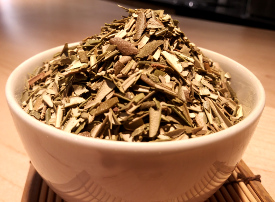Olive Leaf Tea

Olive Leaf Tea: Olive leaves, of course come from the olive tree, also known as Olea europaea, and is included in the same family as lilacs, jasmine, Forsythia and the true ash trees. Olive trees are believed to have originated in ancient Persia and Mesopotamia. The tree grows to a height of 26 to 49 feet and bearing fruit that are either green to purple depending on the stage of harvest.
Documented medicinal uses began in the early 1800s, by using crushed olive leaves to lower fevers, and a few decades later to be used as a treatment for malaria. In Moroccan medicine, olive leaf has been used to stabilize blood sugar levels, as well as a treatment for diabetes through the control of blood glucose levels within the body through the delay of sugar production.
Oleuropein, one of the primary compounds found within the olive leaf, have garnered attention due to its antibacterial, antiviral, as well as having antifungal properties. The potent antioxidant also aids in naturally lowering blood pressure and preventing cardiovascular disease. Olive leaf has also been found to reduce triglyceride levels (reducing bad cholesterol).
Olive leaf also promotes the orderly degradation and recycling of cellular components by decreasing aggregated proteins and a reduction of cognitive impairment. Oleuropein once again is a major component in reducing the symptoms of age-related disorders such as dementia and Alzheimer’s disease.
Skin protections, arthritis and immunity-boosting properties are a few more benefits of drinking olive leaf tea.
Source: https://ourpermaculturelife.com/7-great-health-benefits-of-fresh-olive-leaf-tea-free-from-your-tree/
Source: https://drhealthbenefits.com/food-bevarages/beverages/tea/health-benefits-olive-leaves-tea

